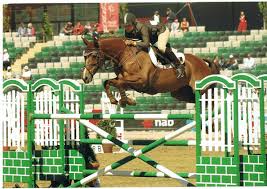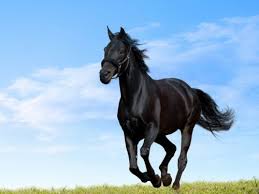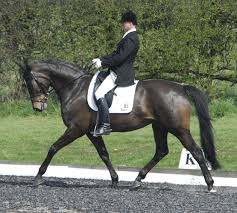Source:Goolge.com.pk
Horse Drawings In Pencil Biography
Allow me to introduce myself--my name is Suzanne Jessup. I have been drawing horses since I could first pick up a pencil. When I was younger, I was one of those starry eyed little girls that you always see gawking at horses in the fields and at horse shows. I bought my first horse when I was fourteen. That is when I began to really draw horses! Hopefully, through this tutorial, I can help you to draw horses as well!
I would like to add that none of the work on this site is available for clip art. =o) It is all original art work by myself, and is copyrighted to me. With that said, let us begin, shall we?
There are a lot of things you need to know before you can draw a believably realistic horse. You will need to know about a horse’s anatomy, how he moves, and how he acts. I am going to break this tutorial down into several steps for you. I also believe that it is fair to tell you that you will not be able to draw better horses right away. Believe it or not, practice makes perfect! In this spirit, this tutorial will give you homework. Hopefully, I can help you to draw better horses.
LESSON 1 – ANATOMY
I am of the school of thought that you can not draw anything well unless you know how it is put together. Trust me, knowing anatomy really does help! I have only attempted an understanding of it recently, and I can already see where the knowledge has helped me to become better!
Understanding anatomy will help you to create a solid understanding of how a horse is put together, and it will help to give you a strong foundation to build your horses.
The following is a sketch I made of a basic equine skeleton. I found it very helpful to actually draw. That way, I remember where the bones are, which bones connect to which bones, and it helped to give me a better understanding of how a horse is built. I suggest drawing this a few times if you are serious about drawing realistic horses. It can only help =o).
Lets get a little more in depth and take a look at a horse’s muscles. Understanding the placement of the muscles will help your horse take on a more realistic look. Placing muscle definition correctly in your drawing will help give a more life-like touch to your horse. Good muscle placement also helps make action drawings more realistic and can help your drawing take on a sense of movement as opposed to a simple pose drawing.
Horses have very large muscle groups. They are very powerful, and sometimes complex. Muscles layer on top of one another as well, and thus create further muscle definition. To keep things simple, and because I am still learning, I have only included a basic sketch of muscle groups. I suggest sketching one or two of these as well. Familiarize yourself with muscle placement and become comfortable with it. This should be more than enough to help with definition and your understanding of function.
One of the biggest problems I see fellow artists make with their horses, is poor muscle definition in the front legs. I will admit that I too have difficulty with them. There are so many smaller muscles in the foreleg, that definition can become frustrating. It is also difficult when you do not understand where the bones lie under the muscle, or where the tendons are. This sketch should help. I also suggest that you make your own sketch of this. Like I said before, it can only help =o).
LESSON 2 -- BREEDS
Over the centuries, men have developed hundreds of specialized breeds of the horse. We have bred the bulky and powerful draft horse to pull our carts, our plows, and to carry our knights and heroes. We have bred swift Thoroughbreds to race and jump. We have bred beautiful Arabians to drink the wind and dazzle our eyes. We have bred tiny gentle breeds of ponies to look after our children, and we have bred every breed and every size in between.
Each different breed of horse has been specialized for certain work. Large and gentle draft horses were bred hundreds of years ago as powerful and obedient steeds of war. They carried knights and heroes and, when they were not becoming heroes themselves, draft horses helped us to develop our land.
Draft horses are usually significantly heavier in appearance than most other breeds of horse. Even the bones of draft horses are larger than the bones of the lighter breeds. Draft horses’ necks are thicker, their backs often appear shorter, and they can be much taller than most other breeds. It is not uncommon for a draft horse to be so tall that the head of his master is level with the horse’s shoulder. Their manes are usually thick and often appear almost curly. Draft horses’ tails are often bobbed and the hair is often kept cut short. This way, their tails do not become entwined in harnesses or riggings.
The quarter horse is a favorite of America’s cowboys. They are named such because of their endurance. It is said that a quarter horse has excellent speed and endurance, but only for a quarter of a mile =o). They have tremendous endurance, especially for long journeys. They would, no doubt, be an excellent choice of steed for a long quest. Their hind ends are usually very muscular and therefor, very powerful. Of all breeds of horse, the quarter horse is one of the fastest accelerating runners. They maneuver quickly and gracefully and, as a general rule, are sturdy and surefooted.







Horse Drawings In Pencil Biography
Allow me to introduce myself--my name is Suzanne Jessup. I have been drawing horses since I could first pick up a pencil. When I was younger, I was one of those starry eyed little girls that you always see gawking at horses in the fields and at horse shows. I bought my first horse when I was fourteen. That is when I began to really draw horses! Hopefully, through this tutorial, I can help you to draw horses as well!
I would like to add that none of the work on this site is available for clip art. =o) It is all original art work by myself, and is copyrighted to me. With that said, let us begin, shall we?
There are a lot of things you need to know before you can draw a believably realistic horse. You will need to know about a horse’s anatomy, how he moves, and how he acts. I am going to break this tutorial down into several steps for you. I also believe that it is fair to tell you that you will not be able to draw better horses right away. Believe it or not, practice makes perfect! In this spirit, this tutorial will give you homework. Hopefully, I can help you to draw better horses.
LESSON 1 – ANATOMY
I am of the school of thought that you can not draw anything well unless you know how it is put together. Trust me, knowing anatomy really does help! I have only attempted an understanding of it recently, and I can already see where the knowledge has helped me to become better!
Understanding anatomy will help you to create a solid understanding of how a horse is put together, and it will help to give you a strong foundation to build your horses.
The following is a sketch I made of a basic equine skeleton. I found it very helpful to actually draw. That way, I remember where the bones are, which bones connect to which bones, and it helped to give me a better understanding of how a horse is built. I suggest drawing this a few times if you are serious about drawing realistic horses. It can only help =o).
Lets get a little more in depth and take a look at a horse’s muscles. Understanding the placement of the muscles will help your horse take on a more realistic look. Placing muscle definition correctly in your drawing will help give a more life-like touch to your horse. Good muscle placement also helps make action drawings more realistic and can help your drawing take on a sense of movement as opposed to a simple pose drawing.
Horses have very large muscle groups. They are very powerful, and sometimes complex. Muscles layer on top of one another as well, and thus create further muscle definition. To keep things simple, and because I am still learning, I have only included a basic sketch of muscle groups. I suggest sketching one or two of these as well. Familiarize yourself with muscle placement and become comfortable with it. This should be more than enough to help with definition and your understanding of function.
One of the biggest problems I see fellow artists make with their horses, is poor muscle definition in the front legs. I will admit that I too have difficulty with them. There are so many smaller muscles in the foreleg, that definition can become frustrating. It is also difficult when you do not understand where the bones lie under the muscle, or where the tendons are. This sketch should help. I also suggest that you make your own sketch of this. Like I said before, it can only help =o).
LESSON 2 -- BREEDS
Over the centuries, men have developed hundreds of specialized breeds of the horse. We have bred the bulky and powerful draft horse to pull our carts, our plows, and to carry our knights and heroes. We have bred swift Thoroughbreds to race and jump. We have bred beautiful Arabians to drink the wind and dazzle our eyes. We have bred tiny gentle breeds of ponies to look after our children, and we have bred every breed and every size in between.
Each different breed of horse has been specialized for certain work. Large and gentle draft horses were bred hundreds of years ago as powerful and obedient steeds of war. They carried knights and heroes and, when they were not becoming heroes themselves, draft horses helped us to develop our land.
Draft horses are usually significantly heavier in appearance than most other breeds of horse. Even the bones of draft horses are larger than the bones of the lighter breeds. Draft horses’ necks are thicker, their backs often appear shorter, and they can be much taller than most other breeds. It is not uncommon for a draft horse to be so tall that the head of his master is level with the horse’s shoulder. Their manes are usually thick and often appear almost curly. Draft horses’ tails are often bobbed and the hair is often kept cut short. This way, their tails do not become entwined in harnesses or riggings.
The quarter horse is a favorite of America’s cowboys. They are named such because of their endurance. It is said that a quarter horse has excellent speed and endurance, but only for a quarter of a mile =o). They have tremendous endurance, especially for long journeys. They would, no doubt, be an excellent choice of steed for a long quest. Their hind ends are usually very muscular and therefor, very powerful. Of all breeds of horse, the quarter horse is one of the fastest accelerating runners. They maneuver quickly and gracefully and, as a general rule, are sturdy and surefooted.
Horse Drawings In Pencil
Horse Drawings In Pencil
Horse Drawings In Pencil
Horse Drawings In Pencil
Horse Drawings In Pencil
Horse Drawings In Pencil
Horse Drawings In Pencil
Horse Drawings In Pencil
Horse Drawings In Pencil
Horse drawings
My Horse Drawings
No comments:
Post a Comment